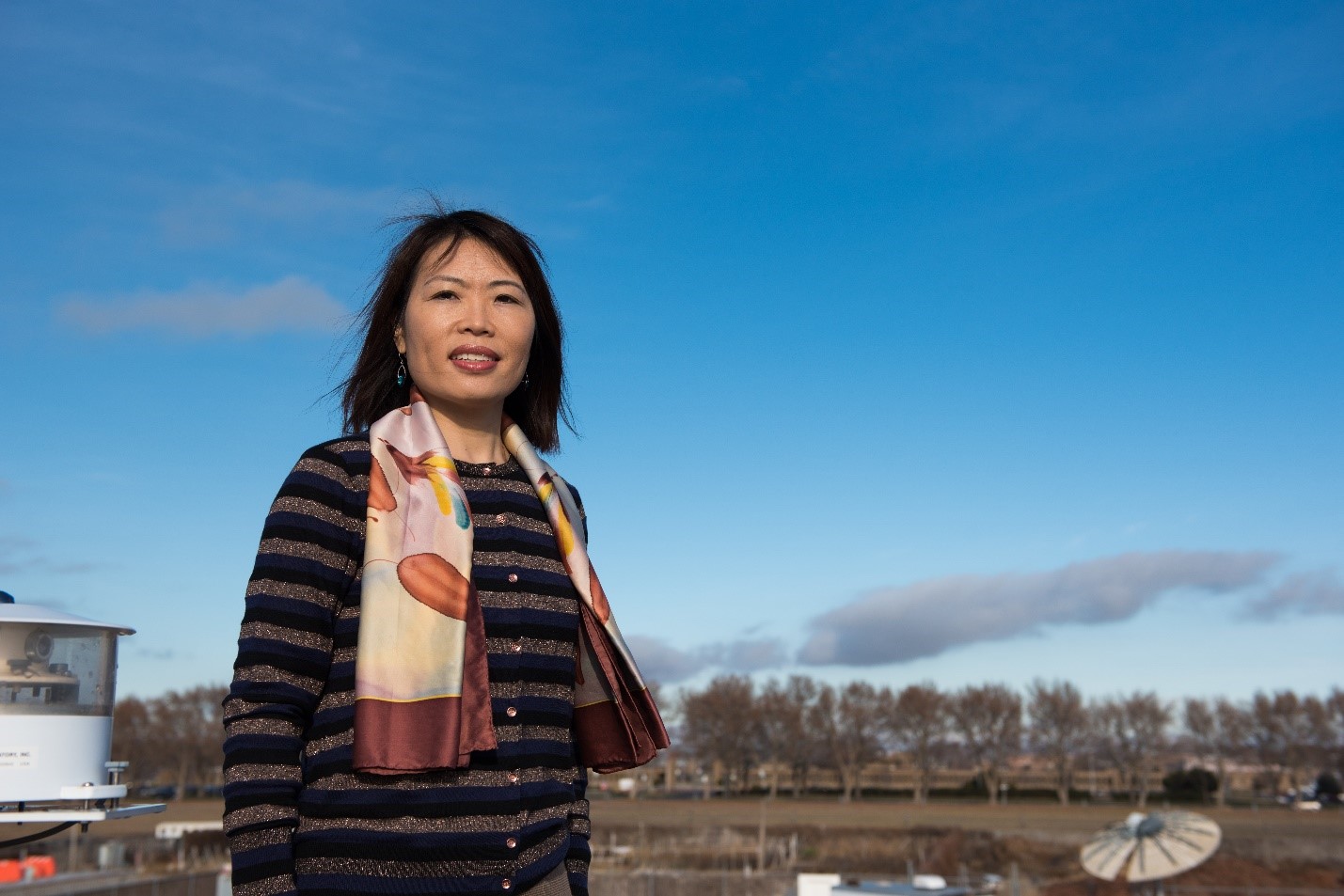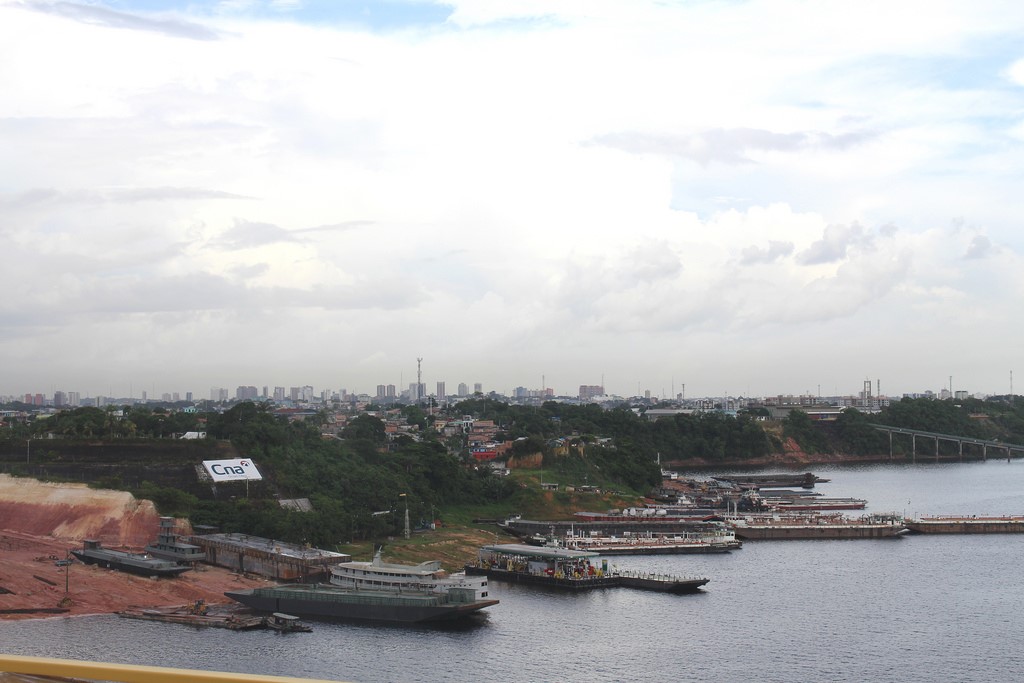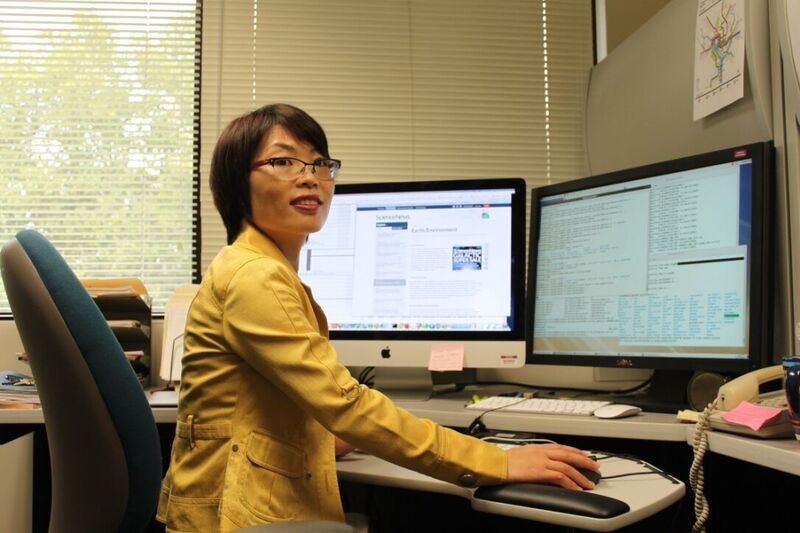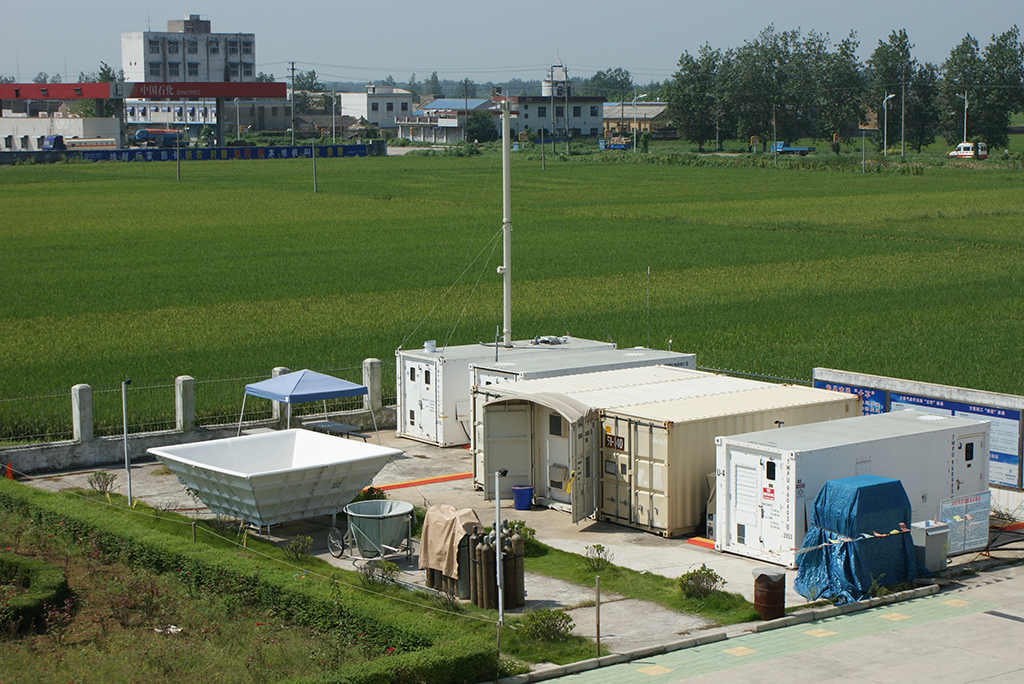UEC Profile: Jiwen Fan and the Enduring Allure of Deep Convection and Severe Storms
Published: 25 April 2018
A Scientist Searches for the Physical Factors Behind Epic Rain, Damaging Winds, and Hail the Size of Plums
This is the fourth article in a series of profiles on members of the ARM User Executive Committee (UEC).

As a girl in a farming village in Hunan Province, China, Jiwen Fan—now a fast-rising atmospheric scientist—grew up in a household with earthen floors and no electricity. She was the eldest of four children in a family of rice farmers, and started working in the fields at age 5. One of her secret pleasures was leading the cow out to graze.
“Every time I did that, I looked in the sky,” says Fan. “Sometimes it was so beautiful, with these puffy clouds, and sometimes it was so stormy. But I never connected it with my career.”
Today she is an inspired investigator of severe storms, as well as an ascendant expert in modeling cloud-aerosol interactions at the process scale. Such interactions remain the largest uncertainty in models designed to simulate future earth system conditions.
In childhood, says Fan, her only thought was to move out of the village so she could help her family. Her strategy was to study hard. In time, Fan was the first student from the village in mountainous Longhui County to go to college.
She worked hard at her studies. In elementary school, when her mother took the only lamp in the house outdoors to feed the pigs, Fan finished her homework by the light of the moon.
Powerful Papers and a Project of Her Own

More than three decades later, Fan is the author of 76 papers and a senior scientist at Pacific Northwest National Laboratory (PNNL), where she arrived as a postdoctoral associate in 2007.
In 2015 she received an Ascent Award from the American Geophysical Union. In 2017 she got an Early Career Research award from the U.S. Department of Energy (DOE), which came with five years of funding to study severe storms in the central United States.
Fan’s most recent paper appeared in Science and investigated the influence of ultrafine aerosol particles from urban areas on severe storms. Until the paper appeared, such particles (less than 50 nanometers in diameter) were thought to be too small to influence cloud formation.
The findings were based on ground and air measurements made during the Green Ocean Amazon (GoAmazon2014/15) field campaign conducted by the ARM Climate Research Facility.
A 2015 paper with Fan as the lead author received similar media attention worldwide. It linked heavy air pollution to a catastrophic flooding event in China’s Sichuan Basin.
“Pollution particles can be very effective cloud condensation nuclei,” she says. They do that by forming lots of small droplets that can rapidly change the microphysical properties of clouds.
Today, Fan’s Early Career Research project centers on investigations of how such physical factors could affect severe storm frequency and intensity in the central United States. With two postdocs helping, the project got underway in September and is slated to wrap up in August 2022.
Wildfires, Urbanization, and Severe Storms

Fan and her postdocs focus on getting a process-level understanding of how wildfires and urbanization affect cloud formation and storms, particularly when plumes of fine smoke particles well up over the Rocky Mountains and interact with storm systems on the central plains.
One puzzling fact about those traveling smoke particles has Fan transfixed: how wildfires influence hailstone formation, size, and frequency.
“We’ve identified over a dozen such cases, and we are looking into the details of cloud dynamics and microphysics,” she says.
Storm severity in the central United States is also affected by land use changes and urbanization, says Fan, who has observed that storm systems intensify near and within cities.
To put these effects into models, she says, the first step “is to improve our understanding.”
Fan is also looking at how severe storms and these physical impacts can be represented in earth system model simulations. DOE, she notes, has a new project called the Energy Exascale Earth System Model (E3SM).
A Gap-Closing Project on Mesoscale Convective Systems
In addition to her Early Career Research project, which is only six months old, Fan is the principal investigator of an ambitious multi-partner DOE effort that started about two years ago.
The Climate Model Development and Validation (CMDV) project is designed to bridge data of the kind ARM collects related to mesoscale convective systems with global model simulations of those systems.
“Most climate modelers generally have a hard time dealing with small-scale measurements in both space and time, so using ARM measurements could be difficult for them,” says Fan. “In the CMDV project, we have a big observational team familiar with ARM data working with a team of global modelers.”
How is it going? “We have made good progress,” she says, “have produced a lot of new and useful data sets, and have done some good model development based on data as well.”
Taking part are three national labs (PNNL, Brookhaven, and Sandia), as well as four university partners.
As a member of ARM’s User Executive Committee (UEC), Fan feels the same obligation to connect ARM data with the modeling community.
“I want to talk to both communities and try to bridge them,” she says. “That’s my major role.”
At the same time, the UEC can reach abroad more, especially to scientists in her native China, where interest is high, says Fan. “Whenever I go back and present my studies, it’s like an advertisement for ARM.”
Turns That Change a Life

Fan went to China in 2008 for an ARM Mobile Facility field campaign studying the climatic effects of aerosols in that country’s fast-changing atmosphere. It was her first trip back after finishing her PhD.
When she visited her old village, it was hard to recognize—so much bigger, with more and better houses, and so prosperous. The trip brought memories of her plan to escape her old life by studying hard—and memories of how things could have been different.
“I had a very good teacher in middle school, or else I would not be here,” says Fan. “He played a very key role in my life.”
Ruiyan Fan (no relation) was then a man in his 60s who had briefly been a college student before the time of Maoist China. When the young Fan’s parents wanted her to work more on the farm, he told them, “You have to give her more time to study.”
With that boost, Fan went to high school at a boarding school a day’s walk away over rough mountain country. Starting at age 14, she returned home only every month or two. While there, Fan developed a fascination with geophysics. By her fourth year, in 1992, her grades were so brilliant that she was not required to take the national college entrance exam.
Fan studied chemistry education at Hunan University of Science and Technology (geophysics was not offered as a major) and earned a bachelor’s degree in 1996.
For graduate studies, “three universities in Beijing expressed interest in me,” she says.
Chemistry was not an option for Fan, who was not fond of waiting for experiments to finish in a laboratory. “I wanted to get outside,” she says.
Her love of the environment and her lingering love of geophysics led Fan to choose pursuing a master’s degree in environmental science (1999) at China University of Mining and Technology.
She worked for a year in Beijing developing chemical additives that would reduce sulfur dioxide emissions from flue gas. Then came what were to be doctoral studies at the University of Central Florida, but Fan left with just a master’s degree (2002), when her mentor had funding trouble.
She hit her stride at Texas A&M University, where after a couple of more years concentrating on air quality studies she rediscovered the allure of clouds and of severe storms.
One big question was: How does pollution affect weather? Her mentor, atmospheric chemist Renyi Zhang, “foresaw this was going to be very interesting, that it would boom,” says Fan. “He was right. The past 10 years was the golden period for the aerosol-cloud interaction field.”
By June 2007 she was a postdoctoral associate at PNNL, studying arctic clouds at first but never giving up her fascination with convective clouds: the kind she gazed at in wonder as a girl in China, leading the family cow to pasture.
“I am still that girl,” says Fan. “I just understand more.”
The ARM Climate Research Facility is a DOE Office of Science user facility. The ARM Facility is operated by nine DOE national laboratories, including Pacific Northwest National Laboratory.
Keep up with the Atmospheric Observer
Updates on ARM news, events, and opportunities delivered to your inbox
ARM User Profile
ARM welcomes users from all institutions and nations. A free ARM user account is needed to access ARM data.


















